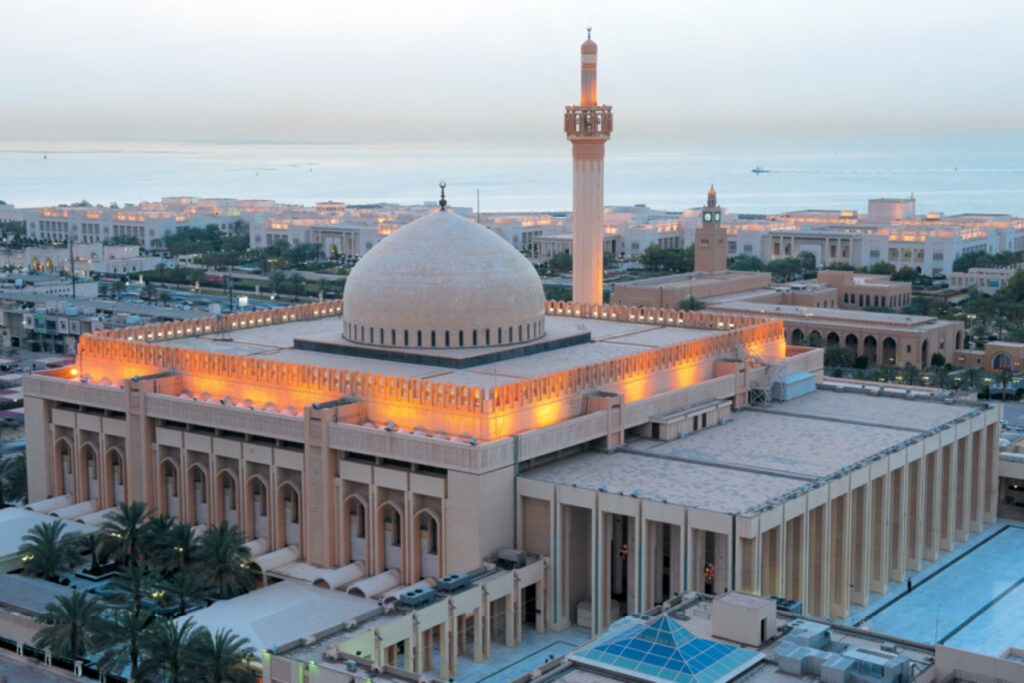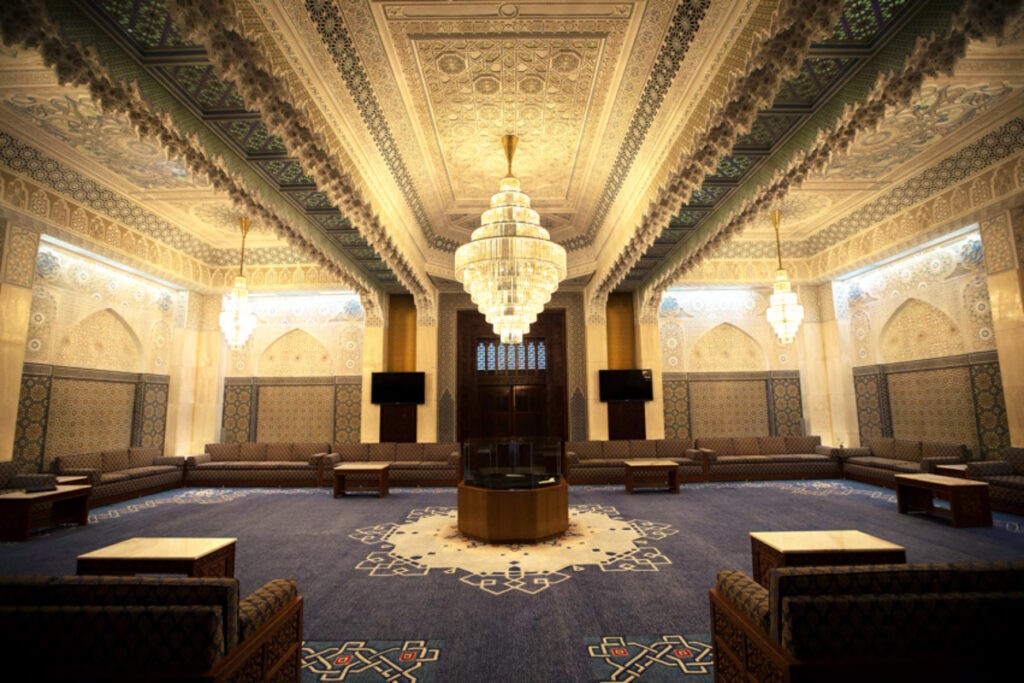12/02/2024
12/02/2024

KUWAIT CITY, Feb 12: Nestled in the heart of Kuwait City, the Grand State Mosque stands as an architectural masterpiece, blending the rich Islamic heritage of Andalusia, the Levant, and the Maghreb into a breathtaking symbol of faith and culture. Commissioned by the late Amir, Sheikh Jaber Al-Ahmad Al-Jaber Al-Sabah, and completed in 1987, this magnificent structure embodies the pinnacle of Islamic artistry and craftsmanship.

Covering an expansive 45,000 square meters, including 25,000 square meters of built-up areas and 20,000 square meters of open spaces adorned with tranquil waterways and lush gardens, the Grand State Mosque is hailed as the largest mosque in Kuwait. With a capacity to accommodate approximately 70,000 worshippers, it serves as a beacon of spirituality for Muslims across the country.
Ali Shaddad, the director of the mosque, provided insight into its architectural marvels in an exclusive interview with Kuwait News Agency (KUNA). The mosque comprises three prayer halls: the main sanctuary, the daily prayer hall, and the women's prayer hall, along with the princely hall. The main prayer hall, adorned with a towering dome reaching 43 meters above the ground, exudes grandeur and elegance, providing ample space for approximately ten thousand worshippers.
Central to the mosque's splendor is the intricately adorned dome, featuring the Most Beautiful Names of God in Kufic script, surrounded by verses from the Quran spanning 80 meters. Engravings of Allah's names, resembling sun disks, grace the dome's periphery, accompanied by four smaller domes adorned with Moroccan gypsum and exquisite chandeliers.
The interior of the main prayer hall is bathed in natural light streaming through 144 windows, designed in the Andalusian style and adorned with hollow plaster stained with white glass. Complementing the natural illumination are four grand chandeliers, each containing 102 lamps, alongside 80 wall chandeliers, creating a mesmerizing ambiance for worshippers.
The mosque's architectural splendor extends to its intricate details, including 22 doors crafted from Indian teak wood, adorned with Quranic verses and geometric motifs. The women's prayer hall, situated above the main sanctuary, accommodates approximately a thousand worshippers and features 11 hollow mashrabiyas for ventilation and auditory access to the imam's voice during prayers.
Adjacent to the main prayer hall lies the daily prayer hall, accommodating around 500 worshippers and boasting walls adorned with Moroccan tile arches and a special mihrab crafted from Indian teak wood. The minaret, a polygonal structure covered with Syrian stone, stands tall amidst four columns, each reaching a height of 72 meters, with an electric elevator facilitating easy access.
The Amiri Hall, an integral part of the mosque complex, serves as a venue for the Amir to receive well-wishers on religious holidays and provides a tranquil retreat for Sheikhs during Ramadan. Adorned with Moroccan mosaics, Diwani script, and Andalusian inscriptions, the hall houses an original copy of the Ottoman Quran, exemplifying the mosque's rich cultural heritage.
As Kuwait's architectural jewel, the Grand State Mosque stands as a testament to the nation's commitment to preserving its Islamic identity and heritage while embracing the finest traditions of art and craftsmanship.


